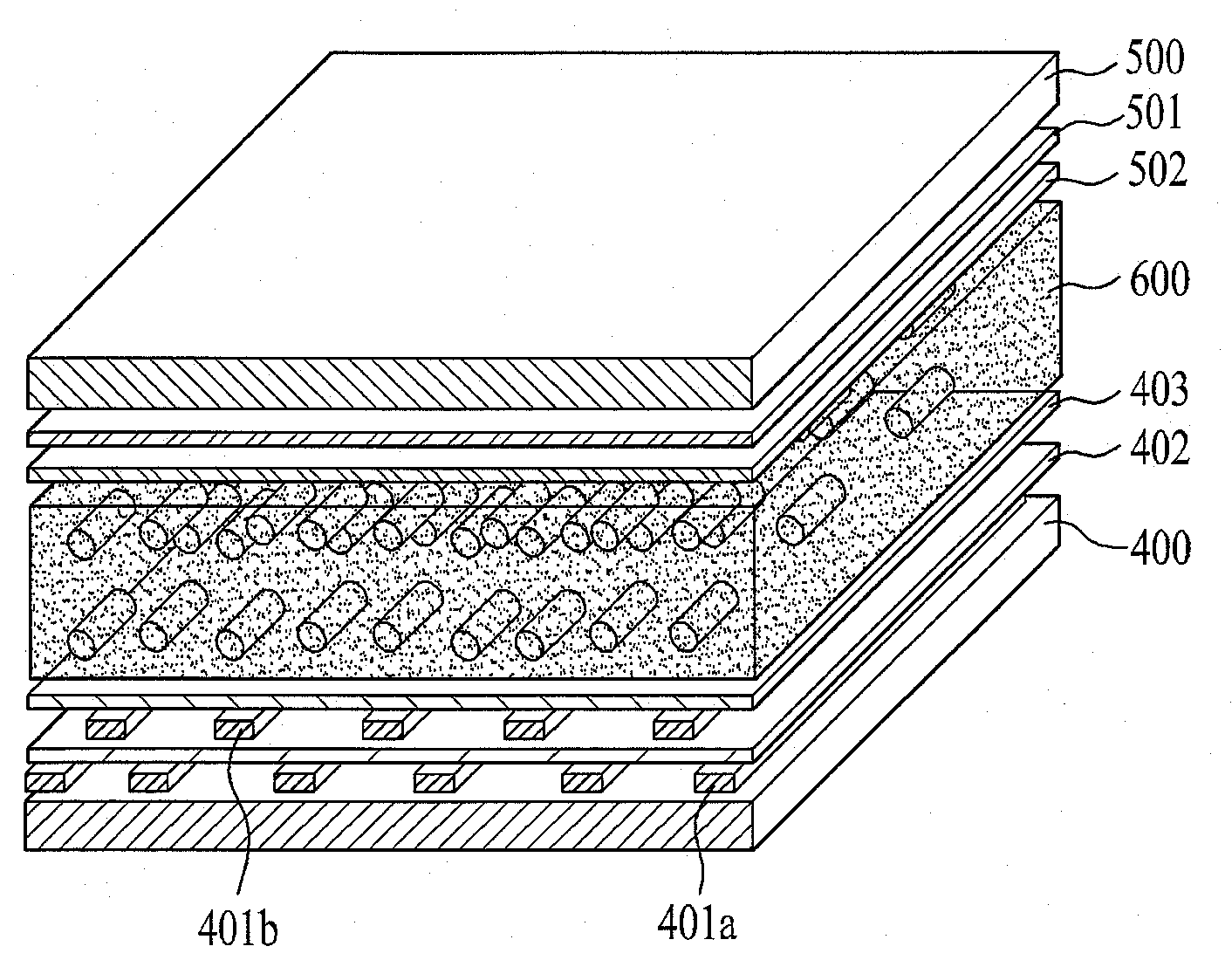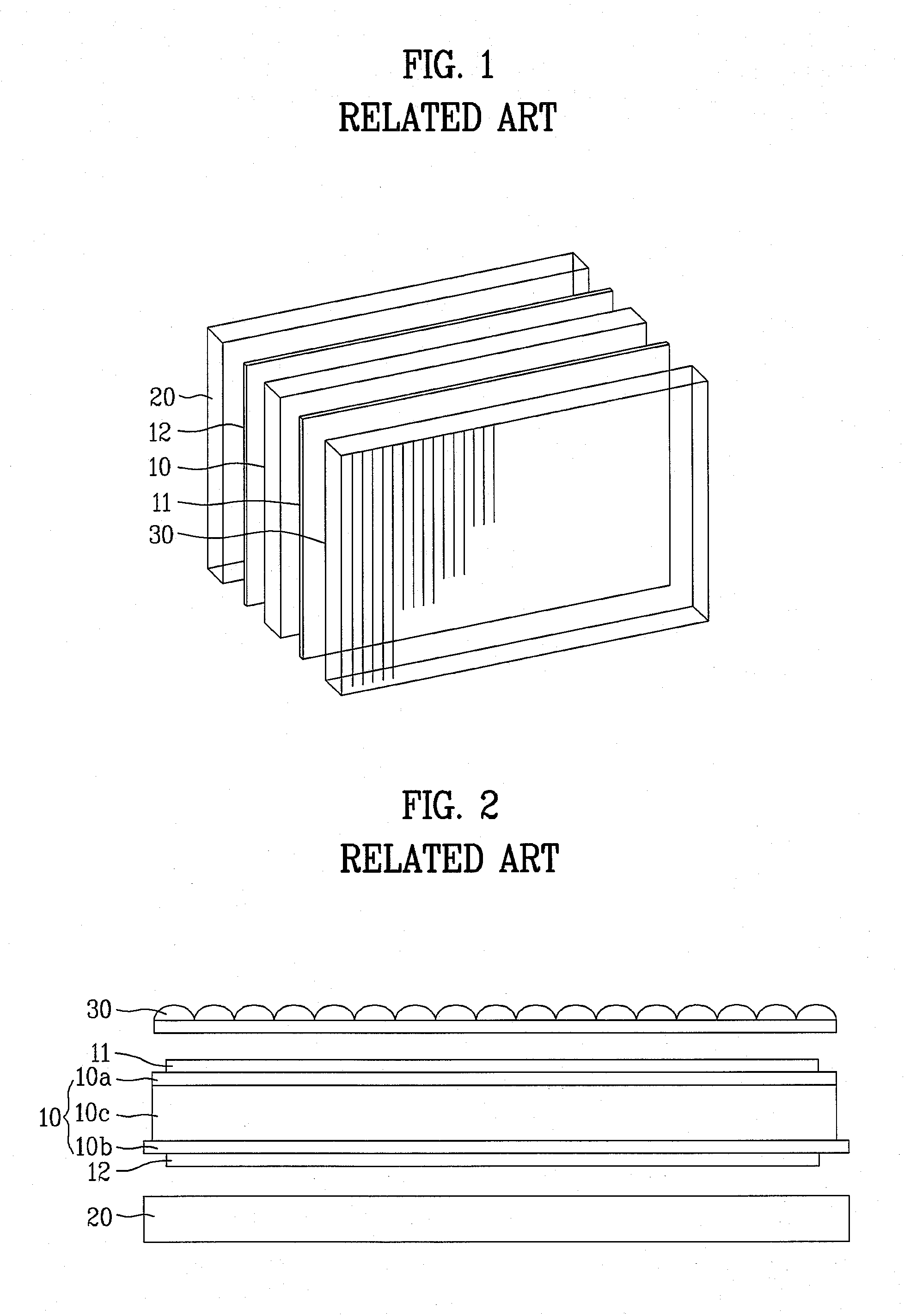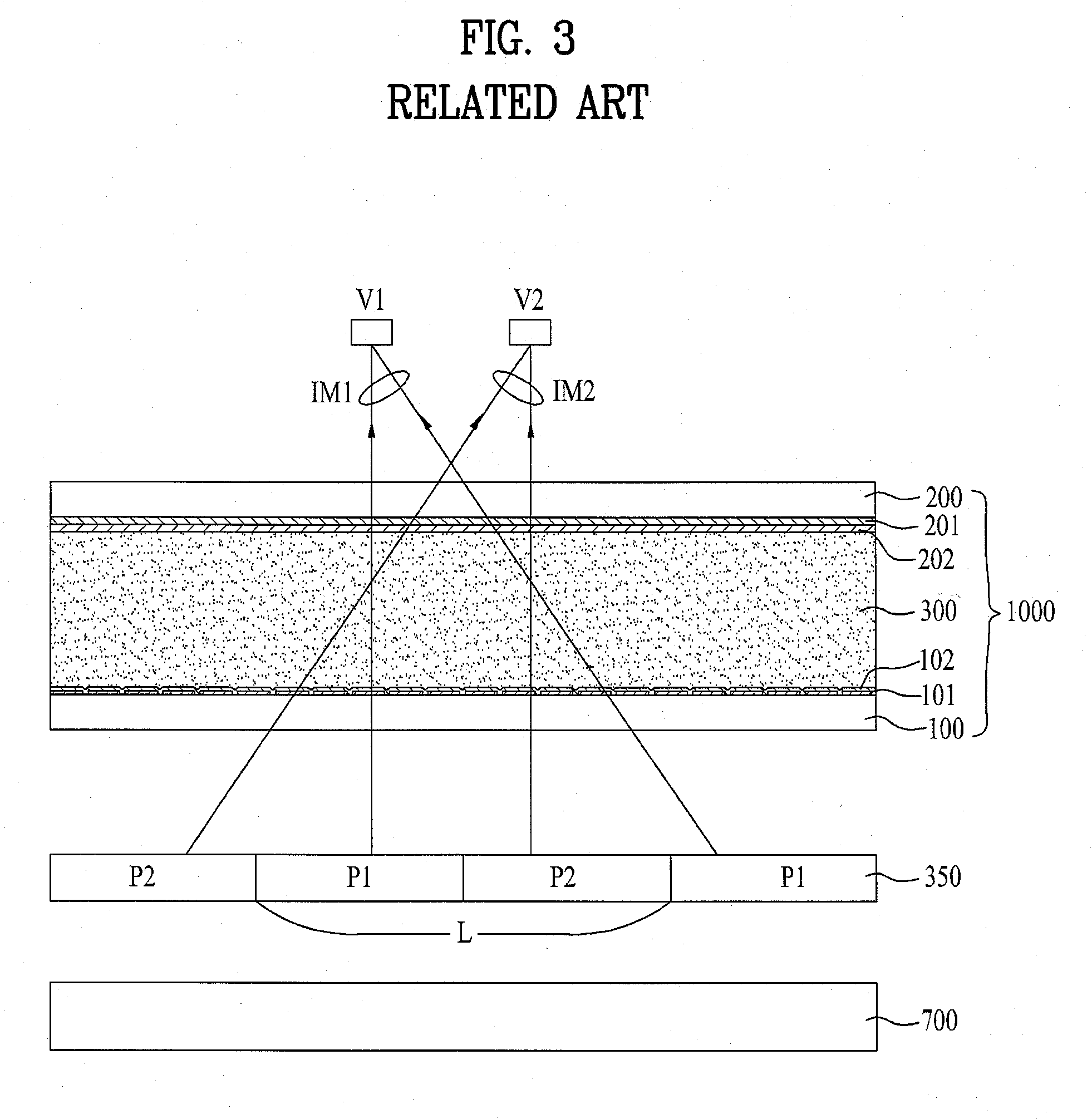Electrically-Driven Liquid Crystal Lens and stereoscopic Display Device Using the Same
a liquid crystal lens and electric drive technology, applied in the direction of instruments, color television details, electrical equipment, etc., can solve the problems of adhesive use, deterioration of transmissivity, and image quality degradation
- Summary
- Abstract
- Description
- Claims
- Application Information
AI Technical Summary
Benefits of technology
Problems solved by technology
Method used
Image
Examples
first embodiment
[0073]Although not described, in the drawings, reference numeral 403 represents a first alignment film, reference numeral 500 represents a second substrate, and reference numerals 501 and 502 represent a second electrode and a second alignment film, respectively. Also, reference numeral 600 represents a liquid crystal layer. These constituent elements have the same functions as those of the above-described first embodiment, and a description thereof will be omitted.
[0074]With the above-described configuration as shown in FIGS. 6 and 7 in which the first electrodes 401a and 401b associated with the first substrate 400 of the electrically-driven liquid crystal lens are formed on the two layers, more dense and close arrangement of electrodes is possible, resulting in a lens profile more similar to a parabolic lens than the above-described profile shown in FIG. 5.
[0075]Hereinafter, a method for applying signals to the respective electrodes of the electrically-driven liquid crystal lens ...
second embodiment
[0099]Hereinafter, a method for forming contacts between electrodes and metal lines using a reduced number of masks will be described.
[0100]FIGS. 14A to 14D are process sectional views illustrating a method for forming electrodes and metal lines according to a second embodiment of the present invention, FIGS. 15A to 15D are sequential process sectional views taken along the line III-III′ of FIG. 14C, and FIGS. 16A and 16B are sequential process sectional views taken along the line IV-IV′ of FIG. 14C.
[0101]In the drawings, of pad regions on a first substrate, only a particular pad region, located at the upper side or lower side of a first substrate in which contacts between electrodes and metal lines are formed, is illustrated.
[0102]To form electrodes and signal lines according to the second embodiment of the present invention, first, as shown in FIGS. 14A and 15A, after depositing metal on the first substrate 400, the deposited metal is selectively removed, forming metal lines 430....
third embodiment
[0111]FIG. 17 is a plan view illustrating an electrically-driven liquid crystal lens according to the present invention.
[0112]As shown in FIG. 17, in consideration of the fact that the longer the length of first electrodes or metal lines, the greater the line resistance, the electrically-driven liquid crystal lens according to the third embodiment of the present invention proposes to prevent a location away from a signal applying location from receiving an incorrect voltage, causing deterioration in reliability.
[0113]For this, in the third embodiment, a first substrate 800 is divided into a plurality of sections A, B, C and D, and the sections A, B, C and D are provided with first electrodes 811, 812, 813 and 814, respectively and also, are provided with metal lines 831, 832, 833 and 834 to be brought into contact with the respective first electrodes 811, 812, 813 and 814, respectively.
[0114]In the above-described configuration, assuming that n voltages are applied to the metal line...
PUM
 Login to View More
Login to View More Abstract
Description
Claims
Application Information
 Login to View More
Login to View More - R&D
- Intellectual Property
- Life Sciences
- Materials
- Tech Scout
- Unparalleled Data Quality
- Higher Quality Content
- 60% Fewer Hallucinations
Browse by: Latest US Patents, China's latest patents, Technical Efficacy Thesaurus, Application Domain, Technology Topic, Popular Technical Reports.
© 2025 PatSnap. All rights reserved.Legal|Privacy policy|Modern Slavery Act Transparency Statement|Sitemap|About US| Contact US: help@patsnap.com



